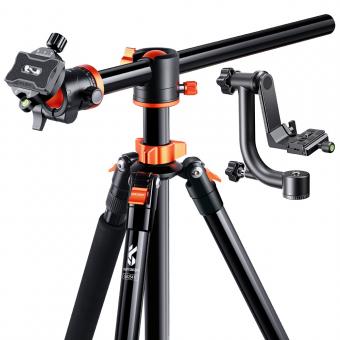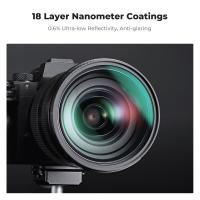What Is The Most Advanced Microscope?
The most advanced microscope is currently the 3D super-resolution microscope, which allows for imaging at the nanoscale level with unprecedented detail and clarity. This technology has revolutionized our understanding of cellular and molecular structures, enabling scientists to observe biological processes in real time with remarkable precision.
1、 Electron Microscopy

The most advanced microscope in the field of Electron Microscopy is the Transmission Electron Microscope (TEM). This powerful instrument uses a beam of electrons to create high-resolution images of the internal structure of a specimen. The TEM is capable of achieving magnifications of up to 50 million times, allowing researchers to observe the finest details of biological, material, and nanoscale samples.
In recent years, advancements in TEM technology have led to the development of aberration-corrected TEMs, which can correct for imperfections in the electron beam, resulting in even higher resolution images. Additionally, the integration of techniques such as electron energy-loss spectroscopy (EELS) and electron tomography has further expanded the capabilities of TEM, allowing for the analysis of chemical composition and three-dimensional imaging of specimens at the nanoscale.
Furthermore, the emergence of cryo-electron microscopy (cryo-EM) has revolutionized the study of biological samples by enabling the visualization of biomolecular structures at near-atomic resolution. This technique has significantly contributed to our understanding of complex biological processes and has been instrumental in drug discovery and development.
Overall, the Transmission Electron Microscope, particularly the aberration-corrected TEM and cryo-EM, represents the pinnacle of advanced microscopy, providing unprecedented insights into the nanoscale world and driving groundbreaking discoveries in various scientific disciplines.
2、 Scanning Probe Microscopy

The most advanced microscope in the field of Scanning Probe Microscopy is the Atomic Force Microscope (AFM). AFM is a powerful tool that allows researchers to image and manipulate materials at the nanoscale level with unprecedented resolution and precision. It works by scanning a sharp tip over the surface of a sample, measuring the interactions between the tip and the sample to create a detailed topographic map.
The latest advancements in AFM technology have led to the development of high-speed and high-resolution AFM systems, which can capture dynamic processes at the nanoscale in real time. These systems have enabled researchers to study biological processes, such as protein folding and molecular interactions, with unprecedented detail. Additionally, the integration of AFM with other techniques, such as optical microscopy and spectroscopy, has further expanded its capabilities, allowing for multimodal imaging and analysis of complex materials and biological systems.
Furthermore, the development of advanced data analysis and machine learning algorithms has enhanced the capabilities of AFM, enabling automated image processing, quantitative analysis, and the extraction of valuable information from complex datasets.
Overall, the Atomic Force Microscope represents the most advanced microscope in the field of Scanning Probe Microscopy, and its continuous development and integration with other techniques make it a powerful tool for exploring the nanoscale world and advancing our understanding of fundamental scientific and technological challenges.
3、 Super-resolution Microscopy

The most advanced microscope in the field of super-resolution microscopy is the stimulated emission depletion (STED) microscope. This cutting-edge technology allows researchers to achieve resolutions far beyond the diffraction limit of conventional light microscopes, enabling the visualization of structures at the nanoscale level.
STED microscopy works by using a focused laser beam to deplete the fluorescence of molecules in the outer regions of the excitation spot, resulting in a smaller effective excitation volume. This allows for the precise localization of individual molecules or structures with unprecedented resolution. The ability to visualize cellular and subcellular structures with such high resolution has revolutionized our understanding of biological processes and has the potential to drive significant advancements in fields such as neuroscience, cell biology, and materials science.
The latest developments in STED microscopy have focused on improving imaging speed, reducing photobleaching, and increasing the depth of imaging. Additionally, efforts are being made to combine STED microscopy with other imaging modalities, such as fluorescence lifetime imaging (FLIM) and single-molecule localization microscopy (SMLM), to provide a more comprehensive view of biological systems.
Overall, STED microscopy represents the pinnacle of super-resolution imaging technology and continues to push the boundaries of what is possible in the field of microscopy. Its ability to provide detailed insights into the nanoscale world holds great promise for advancing our understanding of complex biological systems and driving innovation in various scientific disciplines.
4、 Cryo-electron Microscopy

The most advanced microscope currently available is Cryo-electron Microscopy (Cryo-EM). This cutting-edge technology allows scientists to visualize biological molecules and structures at near-atomic resolution. Cryo-EM has revolutionized the field of structural biology by providing detailed insights into the architecture and function of complex biological systems.
Cryo-EM works by rapidly freezing samples in a thin layer of vitreous ice, preserving their natural state and preventing the formation of ice crystals that can distort the structure. The samples are then imaged using a high-powered electron microscope, and the resulting images are processed to generate 3D reconstructions of the biological molecules.
One of the key advantages of Cryo-EM is its ability to capture dynamic biological processes in action, providing a more comprehensive understanding of molecular mechanisms. This has led to numerous breakthroughs in drug discovery, protein engineering, and the development of new therapeutics.
In recent years, advancements in detector technology and image processing algorithms have further improved the resolution and speed of Cryo-EM, making it an indispensable tool for structural biologists. Additionally, the integration of Cryo-EM with other techniques such as mass spectrometry and X-ray crystallography has expanded its capabilities, allowing for more comprehensive structural characterization of biological macromolecules.
Overall, Cryo-EM represents the pinnacle of modern microscopy, offering unprecedented insights into the molecular world and driving innovation in biomedical research.






























